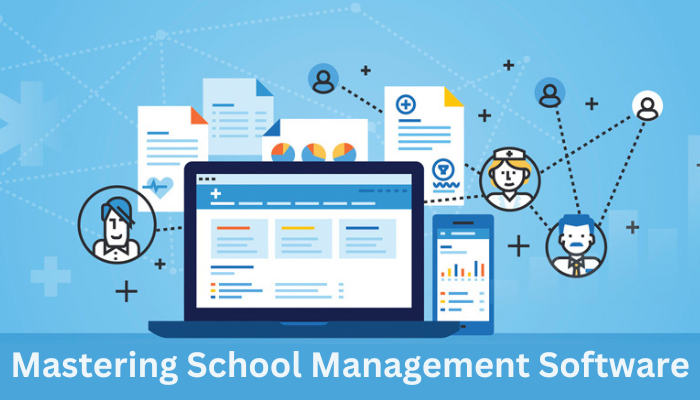Hey there, education enthusiasts! Today, we’re diving into the exciting realm of school management software. If you’ve ever wondered how schools streamline their administrative tasks, track student progress, and enhance communication, you’re in the right place. This blog post is your one-stop guide to understanding the basics, features, and functions of school management software. Let’s embark on this enlightening journey together!
Unlocking the World of School Management Software: An Overview

Before we delve into the nitty-gritty, let’s grasp the essence of school management software. Imagine a digital toolbox that empowers schools to organize, automate, and simplify various administrative tasks. From attendance tracking to grade management, these systems revolutionize the way educational institutions operate.
Understanding the Core Features: Simplifying Complexity
School management software is designed to be user-friendly and efficient. Let’s explore its core features that make it an indispensable tool for educators:
- Student Information Management:
- Why it Matters: Centralized storage of student data, including personal details, academic records, and attendance history.
- How it Works: Input, update, and access student information seamlessly.
- Attendance Tracking:
- Why it Matters: Streamlines the attendance-taking process, reduces manual errors, and provides real-time insights.
- How it Works: Teachers mark attendance digitally, and the system automatically updates records.
- Gradebook and Progress Reports:
- Why it Matters: Enables efficient grading, generates progress reports, and facilitates communication with parents.
- How it Works: Teachers input grades, and the software compiles comprehensive progress reports.
- Communication Portals:
- Why it Matters: Fosters better communication between educators, parents, and students.
- How it Works: Email notifications, messaging systems, and announcements keep everyone in the loop.
- Timetable Management:
- Why it Matters: Optimizes scheduling, prevents conflicts, and ensures a smooth flow of daily activities.
- How it Works: Easily create, modify, and manage school timetables.
- Library Management:
- Why it Matters: Tracks book inventory, manages checkouts, and promotes efficient library operations.
- How it Works: Barcode scanning, digital catalogs, and automated check-in/check-out processes.
- Fee Management:
- Why it Matters: Simplifies fee collection, generates receipts, and provides financial transparency.
- How it Works: Parents can pay fees online, and the system tracks payment history.
Choosing the Right School Management Software: Key Considerations

Now that we’re well-versed in the features, let’s discuss how schools can choose the right software for their unique needs:
- User-Friendly Interface:
- Why it Matters: Ensures ease of use for teachers, administrators, and parents.
- Consideration: Look for software with an intuitive design and minimal learning curve.
- Scalability:
- Why it Matters: Allows the software to grow alongside the school.
- Consideration: Ensure the software can adapt to the school’s changing needs and expanding student body.
- Customization Options:
- Why it Matters: Tailors the software to fit the school’s specific requirements.
- Consideration: Opt for software that allows customization without compromising core functionality.
- Integration Capabilities:
- Why it Matters: Ensures seamless integration with existing tools and systems.
- Consideration: Check for compatibility with other software used by the school.
- Data Security Measures:
- Why it Matters: Safeguards sensitive student and school information.
- Consideration: Prioritize software with robust security features and data encryption.
The Future of School Management Software: Trends to Watch

As technology evolves, so does school management software. Here are some emerging trends shaping the future of this invaluable tool:
- Mobile Accessibility:
- Why it Matters: Allows users to access information on the go.
- Trend: Increasing emphasis on mobile-friendly interfaces and apps.
- Artificial Intelligence (AI) Integration:
- Why it Matters: Enhances automation and decision-making processes.
- Trend: Integration of AI for predictive analytics and intelligent insights.
- Cloud-Based Solutions:
- Why it Matters: Facilitates easy access to data and reduces reliance on physical infrastructure.
- Trend: Growing adoption of cloud-based school management solutions.
- Parental Engagement Tools:
- Why it Matters: Strengthens the partnership between parents and educators.
- Trend: Development of features that enhance parental involvement in student education.
Conclusion
In wrapping up our exploration of school management software, it’s evident that this technological marvel is more than a tool—it’s a catalyst for positive change in education. From simplifying administrative tasks to fostering better communication, the features and functions of school management software propel schools into the digital age. As we envision the future, it’s exciting to anticipate the continued evolution of this transformative tool. Here’s to embracing technology and unlocking the full potential of education!














































